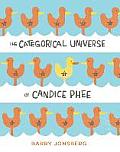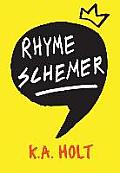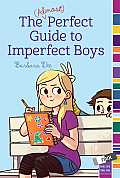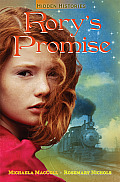
Julie Sternberg photo by Meredith Zinner
Yesterday I posted a review of Friendship Over by Julie Sternberg and offered a chance for readers to win a copy of the book. Today, I’m Julie is stopping by for an interview. Here’s her short bio followed by the interview questions.
Julie Sternberg is the author of the best-selling Like Pickle Juice on a Cookie and its sequels, Like Bug Juice on a Burger and Like Carrot Juice on a Cupcake. Like Pickle Juice on a Cookie is a Gryphon Award winner and a Texas Bluebonnet Award finalist; Like Bug Juice on a Burger is a Gryphon Honor Book, a Pennsylvania Young Reader’s Choice Awards Nominee, and an Illinois Monarch Award Finalist. Formerly a public interest lawyer, Julie is a graduate of the New School’s MFA program in Creative Writing, with a concentration in writing for children. She lives with her family in Brooklyn, New York. For more information about her life and work and to download free activity materials based on her books, visit her website: juliesternberg.com.
You’ve launched a new series for young readers called The Top-Secret Diary of Celie Valentine. What do you like most about writing for kids?
JS: I still have trouble believing that I get to spend my days in the world of children’s books. I’ve always felt so happy there, first as a reader and now as a writer. And sometimes I hear from kids who seem to feel about one of my books the way I felt about my favorite books. There’s nothing more rewarding.
In this first book of the series, Friendship Over, Celie’s dad gives her a diary and a punching bag for her 10th birthday. Why do you think each of these things may be important for a girl her age?
JS: Life can get so complicated for kids Celie’s age. Friendships can start to feel unsettled. Family dynamics can, too. Celie, for example, can’t understand why her best friend, Lula, has suddenly turned mean. Her older sister, Jo, has turned twelve and is making decisions that mystify and annoy Celie. And their grandmother’s health is starting to decline. It’s natural to feel scared, confused, frustrated, and maybe angry in the face of all that change. Punching bags are the perfect way for kids like Celie to take out their frustrations and anger, and diaries are the perfect place for them to try to sort out their feelings.
Friendship Over is not only about Celie’s friendship with Lula, but also her sister’s friendship with Trina. Why did you decide to highlight two very different types of friendship issues in the book?
JS: Friendships can be challenging in different ways. Sometimes two friends are good together generally, but something goes awry. They need to work to get the friendship back on track. That’s the case with Celie and Lula. In other instances, friends are just not well matched. Celie senses immediately that Trina is bad for Jo, Celie’s sister. (Celie thinks Trina is bad for practically everyone.) I like considering a range of friendship problems and acknowledging that a solution that’s good for one might not work well for another.
Readers also learn a lot about Celie’s family, including some concerns about her grandma’s health. Why would you say it’s a good idea to include characters of an older generation in books for young readers?
JS: I like stories that feel real. And most kids in fact spend plenty of time interacting with adults—their own parents; their friends’ parents; grandparents; teachers; neighbors. A story without grownups wouldn’t feel true. And though a children’s story of course has to focus on the interests and concerns of kids, I think grownups qualify. Celie, for example, adores her grandmother. So she is absolutely interested in and concerned about her grandmother’s health.
Is there anything you can share about what’s next in the series?
JS: I’m just finishing the second book, SECRETS OUT, now! Celie is still struggling with changes around her. Her sister, Jo, is starting her first relationship with a boy—and being annoying as a result. Celie’s best friend, Lula, has become close friends with another girl in their grade, making Celie a little jealous. Celie behaves badly as a result, then tries to hide what she’s done. She’s keeping other secrets, too, about her grandmother’s troubling behavior. It’s been fun to write; I hope it’s fun to read.
Is there anything else you’d like to say to readers at Mother Daughter Book Club. com?
JS: I love that you’re reading books together. I recently learned that a book I adored as a kid, HANGING OUT WITH CICI, by Francine Pascal, has been re-issued. I shared it with my older daughter, who loved it, too. We’ve talked about its strengths and weaknesses and our reactions to the characters’ decisions; we’ve both now read the sequels; and we’ve talked about them. I can’t think of a better way for mothers and daughters to connect.
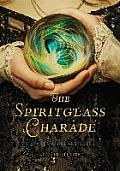 Evaline Stoker and Mina Holmes are back on a case. The vampire-fighting sister of Bram Stoker (author of Dracula) and the niece of Sherlock Holmes team up in the second novel of the Stoker & Holmes series for young adults, The Spiritglass Charade. This time they are tasked with investigating the case of a young woman obsessed with spiritual mediums and séances. Willa Ashton’s mother has recently died and her younger brother, Robby, has disappeared. Willa is convinced her mother speaks to her and that Robby is alive. Evaline and Mina quickly discover that someone seems to want Willa, herself, out of the way, and the culprit is willing to make Willa seem mad in the process.
Evaline Stoker and Mina Holmes are back on a case. The vampire-fighting sister of Bram Stoker (author of Dracula) and the niece of Sherlock Holmes team up in the second novel of the Stoker & Holmes series for young adults, The Spiritglass Charade. This time they are tasked with investigating the case of a young woman obsessed with spiritual mediums and séances. Willa Ashton’s mother has recently died and her younger brother, Robby, has disappeared. Willa is convinced her mother speaks to her and that Robby is alive. Evaline and Mina quickly discover that someone seems to want Willa, herself, out of the way, and the culprit is willing to make Willa seem mad in the process.
